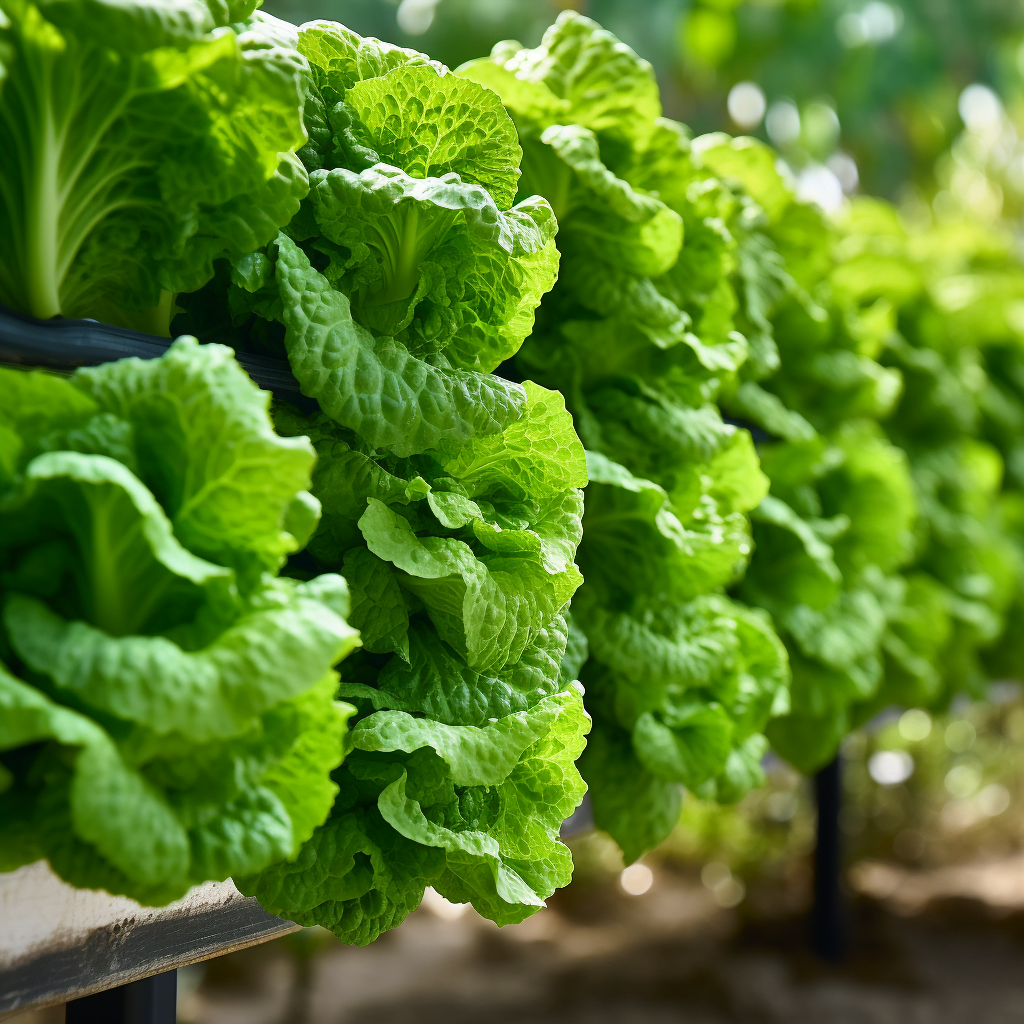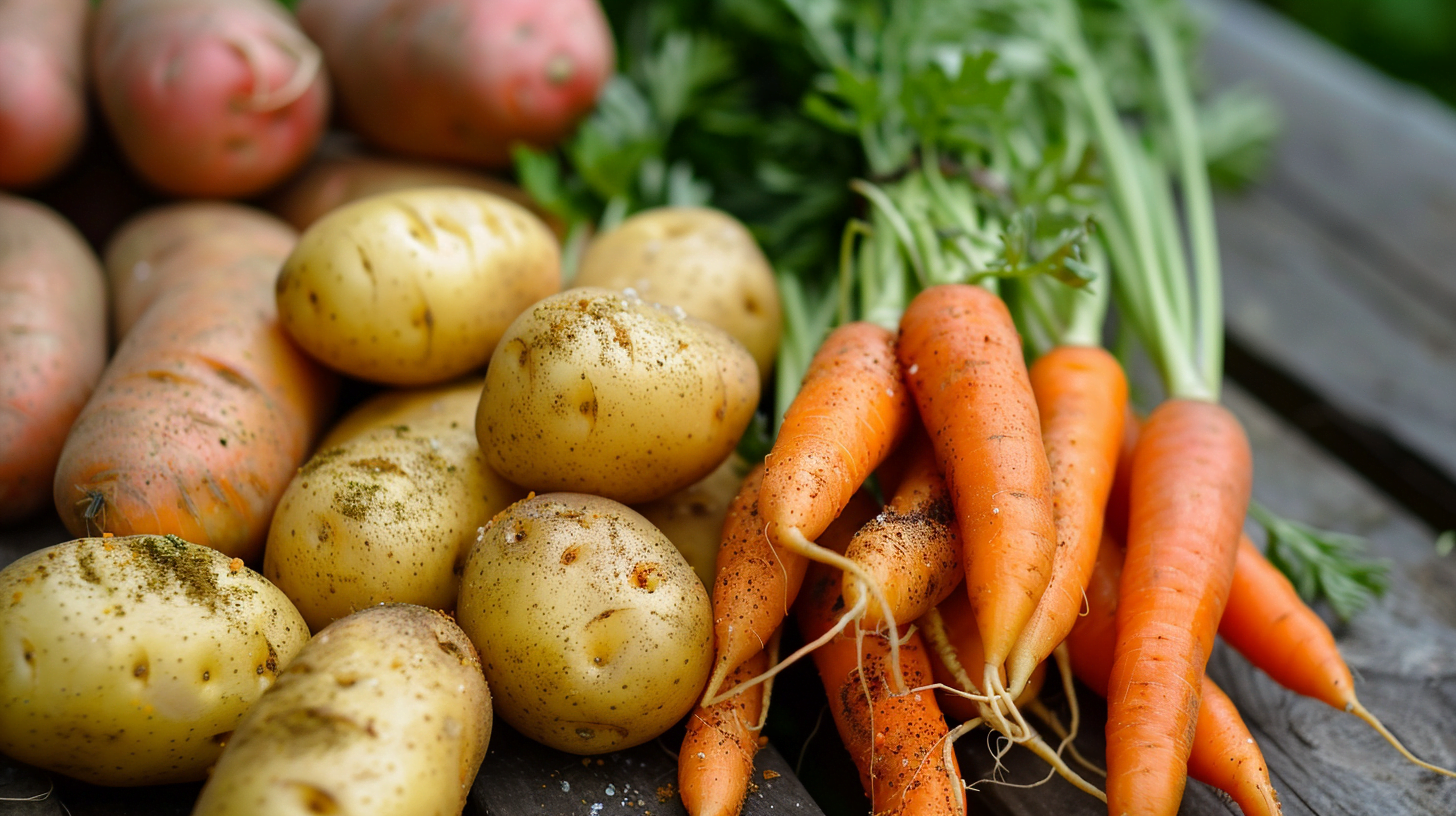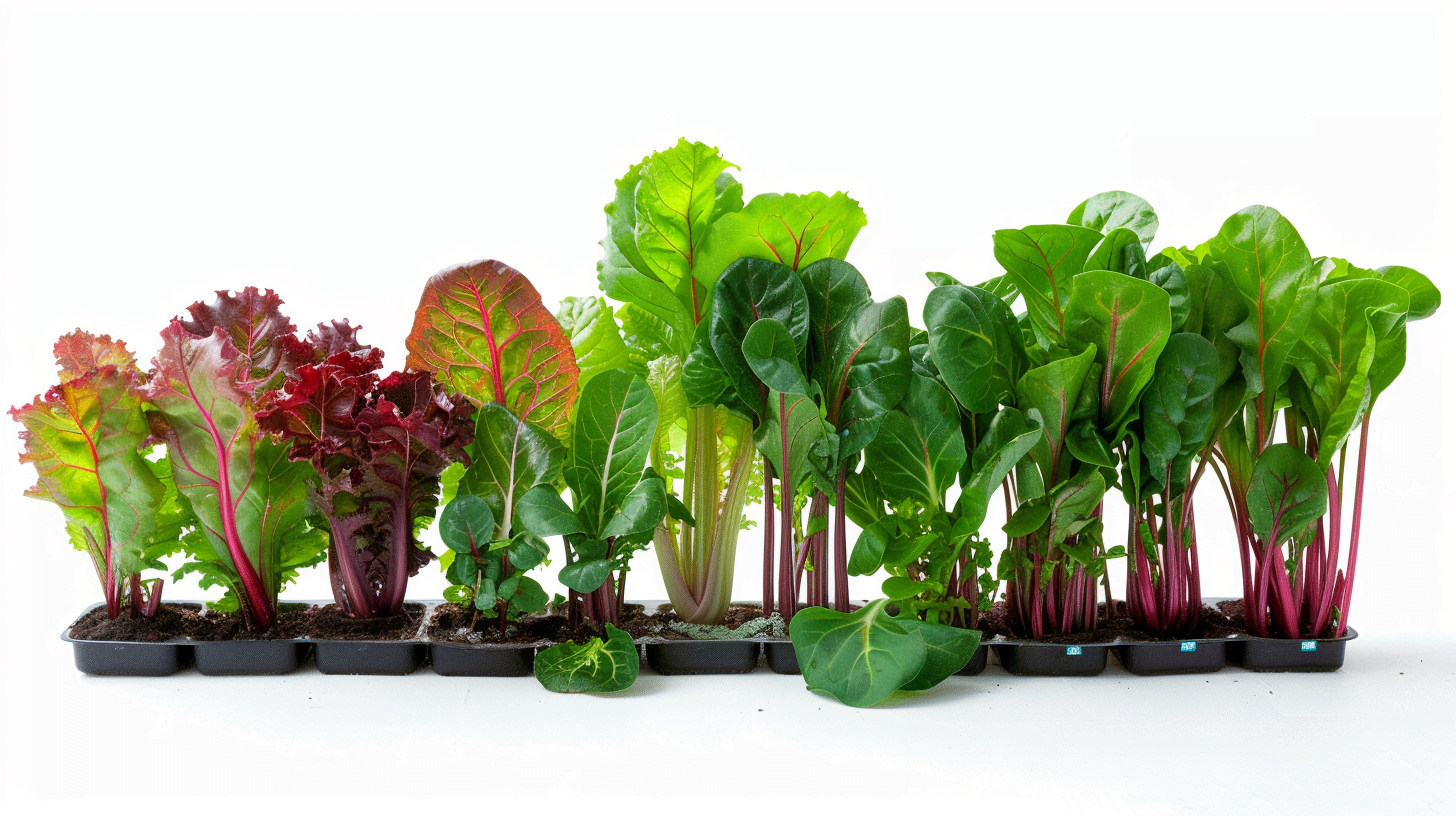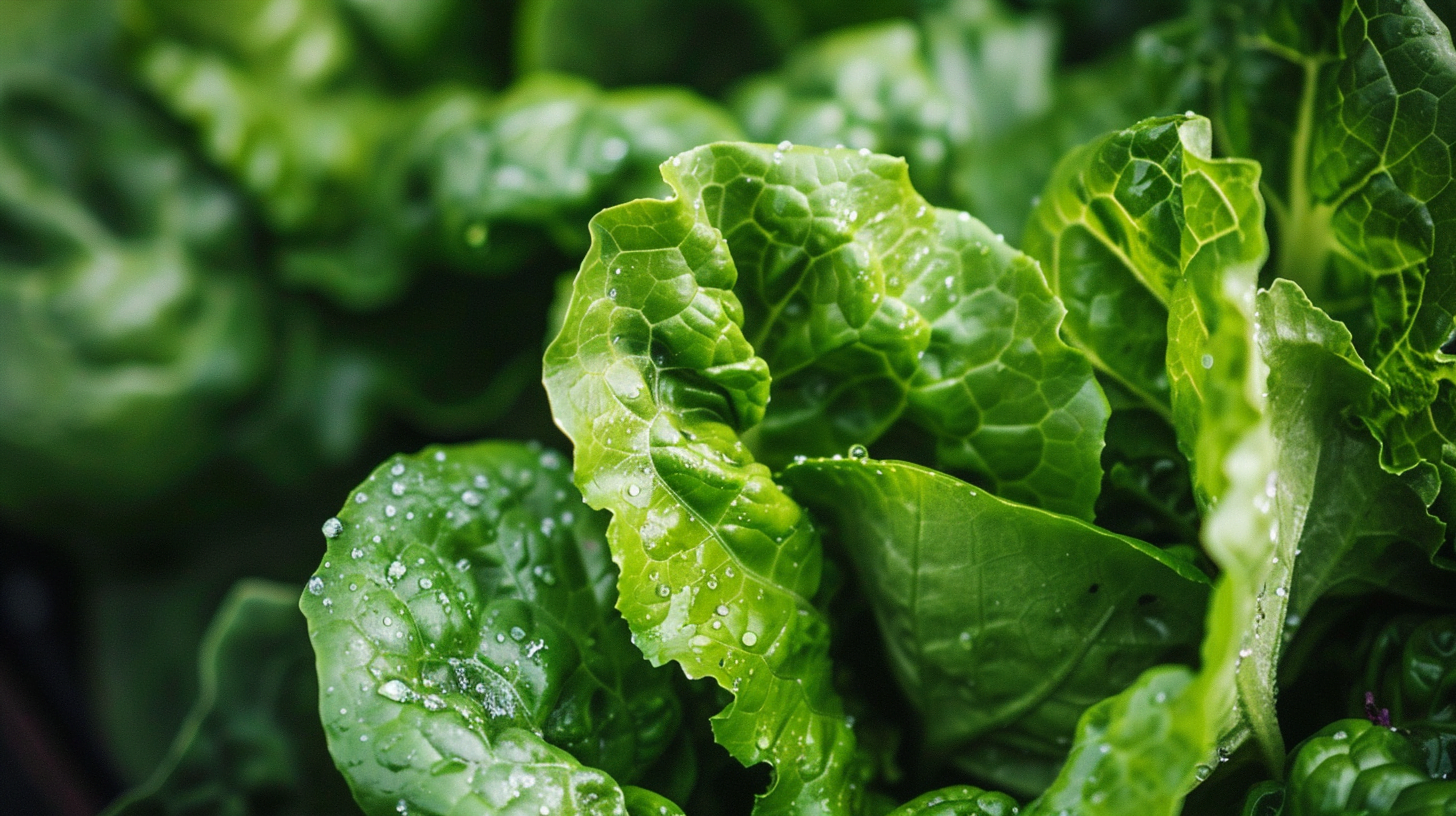Hydroponic gardening has become increasingly popular as a way to grow plants without soil by using nutrient-rich water solutions. This allows growing vegetables and herbs even in places without ideal soil conditions. There are many benefits to hydroponic gardening including faster growth rates, higher yields, and less disease. However, while most vegetables can be grown hydroponically, some types of vegetables are not well-suited to hydroponic systems. So which are some the Vegetables That Cannot Be Grown Hydroponically?
Vegetables with Extensive Root Systems
Vegetables like potatoes, carrots, beets, and radishes develop very large, deep root systems and need loose soil in order to grow properly. It is very difficult to provide adequate root support and space for the roots to expand in a hydroponic system. These vegetables are better suited to traditional in-ground gardening where their roots have room to spread out and expand downwards.
Potatoes
- Potatoes need at least 8 inches of hilled soil and the space to spread out their extensive root system.
- Potato roots can expand 12 inches on all sides so they require a large area to accommodate this growth.
- Trying to grow potatoes in a small container used for hydroponics severely limits the root development.
- Potatoes are heavy feeders and the root system needs to be able to uptake nutrients from a large soil area. This is restricted in hydroponics.
- Hydroponic systems do not allow hilling up soil over the developing potatoes which is needed for proper tuber development.
Carrots
- Carrots can have taproots up to 1 ft long with extensive secondary root structures.
- Carrot roots taper and need loose soil to be able to expand and elongate downwards.
- The long taproot and secondary root structures make it very difficult to accommodate the root system in a hydroponic setup.
- Carrots roots will often hit the bottom of a container quickly and be stunted in their growth.
- Soilless hydroponic systems do not provide the ideal conditions for those long taproots to reach maximum size.
Beets
- Beets have a long central taproot that can be over 1 ft long in ideal conditions.
- Additionally, beets have an extensive network of smaller secondary fibrous roots.
- Beets need deep loose soil for the taproot to fully expand along with all the smaller root hairs.
- Growth will be severely stunted without room for extensive root development.
- The limited space in containers used for hydroponic gardening cannot accommodate the full root system of beets.
Radishes
- Radishes send down a long taproot along with abundant smaller fibrous roots.
- They need approximately 6-12 inches of loose friable soil for best growth.
- The taproot will quickly hit the bottom of a hydroponic container restricting growth.
- Additionally, radishes won’t develop adequate smaller root structures without deep soil to grow in.
- For full root maturation, radishes really need traditional in-ground soil conditions.
Overall, root vegetables with extensive root structures just do not have the root support and space they need to thrive hydroponically. They are better grown traditionally in open ground.
Vegetables Prone to Foliar Diseases
Leafy greens like lettuce, spinach, cabbage, and kale can be prone to various foliar diseases. The warm, continuously moist conditions present in many hydroponic systems can encourage foliar diseases in these vegetables. They tend to grow better in drier soil conditions.
Lettuce
- Lettuce can develop fungal leaf spot, downy mildew, drop, and grey mold in the overly moist conditions found in hydroponics.
- The constant humidity creates a prime environment for foliar fungal and bacterial diseases.
- Hydroponically grown lettuce often develops leaf drop due to the moist humid conditions.
- Lettuce thrives better in slightly drier more well-drained soil that prevents disease issues.
Spinach
- Spinach is prone to fungal leaf spots and white rust fungus under the continuously moist conditions in hydroponics.
- Leaf spots and rust are encouraged by the high humidity found in hydroponic systems.
- These fungal diseases thrive in warm and moist environments common in hydroponics.
- For disease prevention, spinach grows better in soil which generally stays drier.
Cabbage
- Cabbage can suffer from various fungal and bacterial rots and leaf spots due to the excess moisture in hydroponics.
- Alternaria leaf spot, black rot, black leg, and other diseases affect cabbage in humid conditions.
- Drier soil environments help prevent moisture-loving diseases on cabbage plants.
Kale
- Kale often develops fungal leaf spot, black rot, powdery mildew, and Alternaria leaf spot when grown hydroponically.
- The continuously wet foliage encourages foliar fungal and bacterial diseases.
- Kale simply grows healthier with less disease incidence when grown in traditional drier soil gardens.
Overall, many common leafy greens tend to get various foliar diseases when grown hydroponically due to the perfect moist conditions for pathogens. They grow best when their leaves stay drier, so traditional soil gardening is generally better for controlling moisture levels.
Vegetables that Require Pollination
Fruiting vegetables like cucumbers, squash, melons, and tomatoes produce separate male and female flowers. They require bees or wind to transfer pollen from the male flowers to the female flowers for proper pollination and fruit set. Providing adequate pollination can be challenging in an enclosed hydroponic system.
Cucumbers
- Cucumbers produce individual female blossoms that must receive pollen from male blossoms for pollination.
- Bees typically carry out this pollination by moving pollen among flowers in soil gardens.
- Without bees to transfer pollen, closed hydroponic systems lack the pollination needed for cucumbers to develop.
Summer Squash
- Summer squash varieties including zucchini and yellow squash depend on insect pollination.
- Separate male and female squash flowers bloom on the same plants.
- Bees or other insects must spread the pollen for pollination success.
- Enclosed hydroponic gardens cannot provide the essential insect pollination.
Melons
- Cantaloupe, honeydew, and other melons need pollination between male and female flowers.
- Male flowers are located on the main stem while female flowers are on secondary vines.
- Bees move pollen from male to female flowers as they forage.
- Without bees, melons will not be properly pollinated to produce fruits.
Tomatoes
- Tomato plants have small yellow pollen producing male flowers and female flowers with ovaries.
- Wind and mechanical vibration helps move pollen from male to female flowers.
- But hydroponic systems lack natural wind currents meaning no pollination.
- Tomato flowers must be manually pollinated by hand in indoor hydroponic gardens.
Since enclosed hydroponic systems lack natural wind currents and bees, it makes it very difficult for these vegetables to receive adequate pollination to produce fruits and vegetables. Manually pollinating flowers is labor intensive. These crops are better grown in open soil gardens where wind and insects can freely access the flowers.
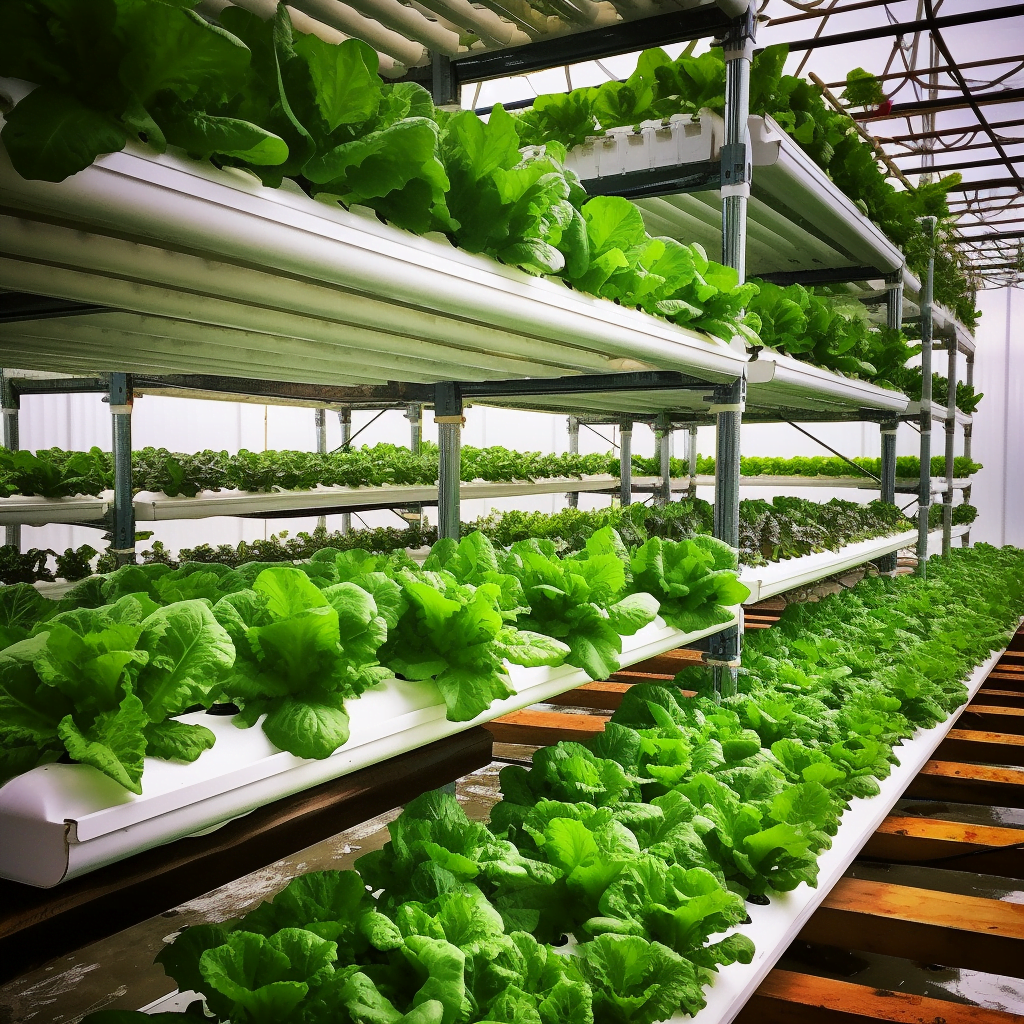
Other Considerations for Hydroponic Vegetable Gardening
While some vegetables are not well-suited to hydroponic growing, many other vegetables thrive under the right hydroponic conditions:
Ideal Hydroponic Vegetables
- Lettuce – Grows quickly and easily in hydroponic systems. Requires little root space.
- Peppers – Produce very well hydroponically. Don’t need pollination.
- Herbs – Thrive in the moist enclosed conditions provided in hydroponics.
- Tomatoes – With proper pollination tomatoes grow very well hydroponically.
- Peas – Grow vertically well in hydroponic systems with proper supports.
- Cucumbers – Require pollination but can produce heavily. Trellising helps growth.
- Beans – Vining types produce abundantly with proper pollination and trellising.
Hydroponic System Types
There are several different types of hydroponic systems. Each has benefits and drawbacks.
- NFT (nutrient film technique) – Shallow stream of nutrient water through grow channels
- DWC (deep water culture) – Roots submerged in an oxygenated nutrient solution
- Ebb and Flow – Periodic flooding of grow tray with nutrient solution
- Aeroponic – Plant roots misted with a nutrient solution
Essential Hydroponic Nutrients
Hydroponic nutrient solutions must provide all the macro and micronutrients essential for plant growth:
- Nitrogen – For green growth and plant proteins
- Potassium – Important for overall plant health
- Phosphorus – Aids in root growth and flowering
- Calcium – Strengthens cell walls
Along with secondary nutrients like magnesium and sulfur. Plus micronutrients like iron, manganese, zinc, copper and boron.
Grow Lights for Hydroponics
Since hydroponic systems are often indoors, specialized grow lights are needed:
- High efficiency LEDs provide the full light spectrum plants need. Energy efficient.
- HPS (high pressure sodium) lights
- Produce intense yellow/orange light ideal for flowering plants. High electricity use.
- Metal halide lights
- Give off a bright white light good for vegetable growth. High electricity demands.
- Natural Sunlight
- Using greenhouse hydroponic systems allows utilizing free abundant natural light. But less control over lighting conditions.
Controlling the Hydroponic Environment
Careful monitoring of conditions is crucial for optimal hydroponic plant growth:
- pH level – Must be kept in ideal range for plant nutrient uptake.
- EC (electrical conductivity) – Monitors nutrient solution strength.
- Temperature – Each plant variety has optimal temperature ranges.
- Humidity – Higher humidity benefits most vegetables and fruiting plants.
- Oxygen levels – Dissolved oxygen is needed for healthy root systems.
Conclusion
While hydroponic systems allow growing many types of veggies without soil, some vegetables like root crops, leafy greens, and vining plants with extensive pollination needs are less suited to hydroponic gardening. Vegetables like potatoes, carrots, lettuce, melons, and squash are better grown traditionally in garden beds. Ideal hydroponic crops include tomatoes, peppers, lettuce, beans, peas, and herbs. With the right system, nutrients, and controlled conditions, hydroponic gardening can produce bountiful harvests of many vegetable varieties in limited space, but it does have limitations with certain crop types.
Common Hydroponic Vegetable Varieties
Here are some of the most commonly grown hydroponic vegetable varieties:
Lettuce
- Butterhead – Hydroponic butterhead lettuce has tender leaves and a sweet flavor. Varieties like Bibb are ideal for hydroponics.
- Romaine – Crunchy ribbed leaves make romaine lettuce perfect for hydroponic culture. Little Gem is a dwarf romaine suited for containers.
- Leaf Lettuce – Frilly, delicate leaf lettuce grows quickly hydroponically. Varieties like Oakleaf, Lollo Rossa, and Black-Seeded Simpson work well.
- Mesclun – Mixed baby greens blends containing lettuces and other greens are easily grown hydroponically.
Tomatoes
- Cherry Tomatoes – High yields of bite-sized fruits. Sweet 100 is a popular hydroponic cherry tomato.
- Roma Tomatoes – Meaty flesh for sauces and cooking. Plum-shaped fruits. Grow well hydroponically.
- Beefsteak – Large fruits with excellent flavor. Red varieties like Brandywine thrive in hydroponic setups.
Peppers
- Bell Peppers – Blocky, crisp sweet peppers in colors like red, yellow, orange and green. Grow abundantly.
- Chili Peppers – Prolific fruit set on compact plants. Varieties like habanero, jalapeño, Anaheim are productive.
- Specialty – Unique smaller peppers like shishito, Padron, banana and Gypsy are easy hydroponic crops.
Herbs
- Basil – Flavorful and aromatic leaves. Grows very rapidly in hydroponic systems.
- Oregano – Hardy bushy herb with zesty flavor perfect for hydroponic growth.
- Chives – Hollow grass-like leaves add mild onion flavor. Thrives hydroponically.
- Rosemary – Fragrant needle-like leaves. Upright varieties work well in hydroponic setups.
- Cilantro – Fast growing with bright flavor. Continuous harvests.
Other Veggies
- Cucumbers – Bush or dwarf varieties save space. Burpless Tasty Green is a common hydroponic type.
- Beans – Pole bean varieties grow vertically when trellised. Blue Lake and Kentucky Wonder do well.
- Peas – Compact plants good for containers like Cascadia shelling peas.
- Radishes – Quick crop for hydroponics. Grow Cherry Bomb and Champion radishes.
By selecting vegetables suited to hydroponic growing, home gardeners can enjoy harvests of fresh produce even with limited space and poor soil. With the right conditions and nutrient solution, hydroponic systems allow growing a diverse range of vegetable crops.
